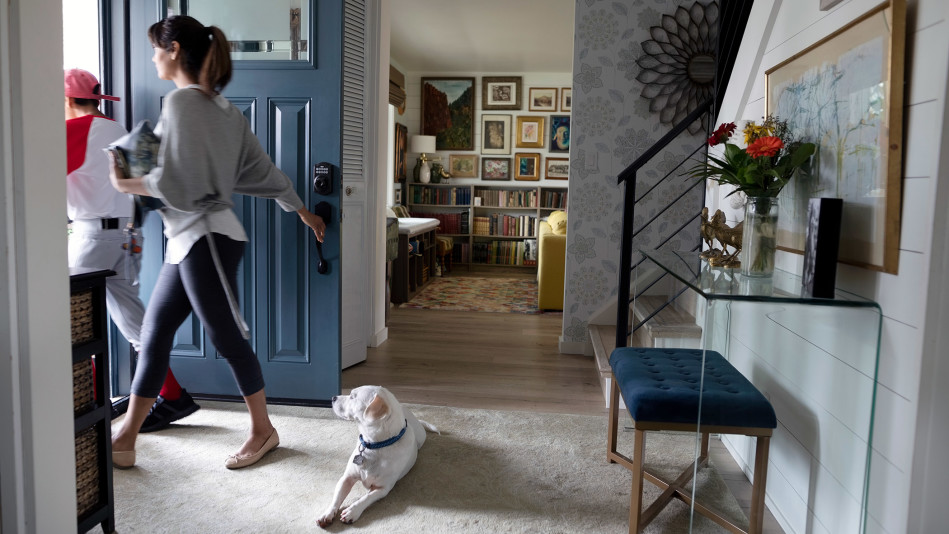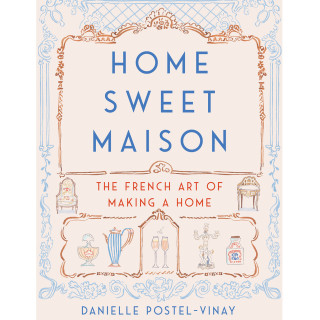The Most Valuable Real Estate in Your Home That You're Overlooking
The author of Home Sweet Maison reveals how an oft-forgotten space can make a meaningful impression.

Photo: Hero Images/Getty Images
In my experience, American entrances are open, clean and unencumbered by anything that might slow one down. If we choose to personalize the entrance at all, we usually display framed photographs of smiling children or a group photo taken at a cheerful family event: a Christmas gathering or a birthday party or a graduation ceremony. And when I see these smiling framed portraits in an entrance, I learn very little about the people I'm meeting. They don't create intimacy. In fact, it's exactly the opposite. It seems to me that these images of family success and happiness are meant to disarm the visitor, to announce: this home is filled with cheerful, honest people who will treat you well. You are welcome here, but our true selves are not up for discussion.
The French entrée is a different experience altogether: it presents you with a mystery. The entrée is where one gives clues, creates puzzles, tells stories and entices you to enter into their lives. In fact, in my experience, the one place that is the most revealing, and where play and fantasy are encouraged, is the entrance.
The entrée exposes one's intimate lives through deeply personal, emotionally charged objects that tell a story about who you are, where you came from and who you want to be.
In other words, the entrée of a French home is never simply a passage to another room. It is meant to slow you down, make you linger awhile, gaze at the spine of a book or into the frame of a picture, acclimatize yourself to the universe of the home. The French entrance demands that you take the time to learn something of the lives you will find within. And they do that by representing themselves and their lives through story.
This makes the entrée the most curated part of a French home.
When creating your own entrée, there are a few guiding principles to keep in mind. First, the entrance is where the personality of your home—meaning your personality and the personality of your family—is most clearly articulated. It is the point of connection between outside and inside worlds, where one leaves the random happenings of the street—the rain or wind or snow or relentless sunshine—and steps into the controlled, protected and intimate sphere of your life.
We've heard the phrase "love at first sight," and of course we all know the importance of a good first impression. The entrée is where this magical moment happens. It is the point of discovery, that weighty space where you learn about the kind of person, or family, you will be meeting. Even more, it is here that the subtle, underlying tone of the house is presented. Family, career, friendship and taste—all of this is telegraphed in the entrée.
First, and most important when creating your entrée, is to follow the dictum: know thyself. The entrance is a reflection of who you are. It is the story of your life and the story of your family. Where did you come from? Where are you going? Using objects, color or artwork, you can create a portrait of the dreams you and your family hold. Because the entrance is the most valuable real estate in your home when it comes to defining who you are and making an impression on others, use that precious territory to give the best version of yourself.
Most important, when creating your entrée: don't be afraid of being fanciful and imaginative. There is more room here for improvisation and drama than in other parts of a French home, so be expressive. Choose objects that tell the story of your inner life.
Unity, harmony and order: understanding how these concepts translate from your personal history to the objects in your entrée will forever change your home.
Creating Your French Entrée
- Your entrée should look like no one else's entrance. Use objects to create a map of your tastes, your interests and your life.
- Choose books, artwork or objects that tell your personal story—objects from your past, present and even future. Don't be afraid to dream. Use objects that express hopes for your future endeavors, such as my father-in-law's typewriter.
- Create a place for shoes and coats. I love a big old-fashioned wooden coatrack, which is a staple of many of the French homes, but hooks on a wall, an armoire or a coat closet will also work.
- Choose a case, bookshelf or cabinet to display your own memory theater. This will showcase small curiosities and give your guests a glimpse of the microcosm of your life.
- Place a natural home fragrance, perfume, incense, diffuser or candle in your entrance that offers a scent to which you have a personal connection.
 Adapted from Home Sweet Maison: The French Art of Making a Home. Copyright 2018 by Danielle Postel-Vinay. Dey St., an imprint of William Morrow.
Adapted from Home Sweet Maison: The French Art of Making a Home. Copyright 2018 by Danielle Postel-Vinay. Dey St., an imprint of William Morrow.



